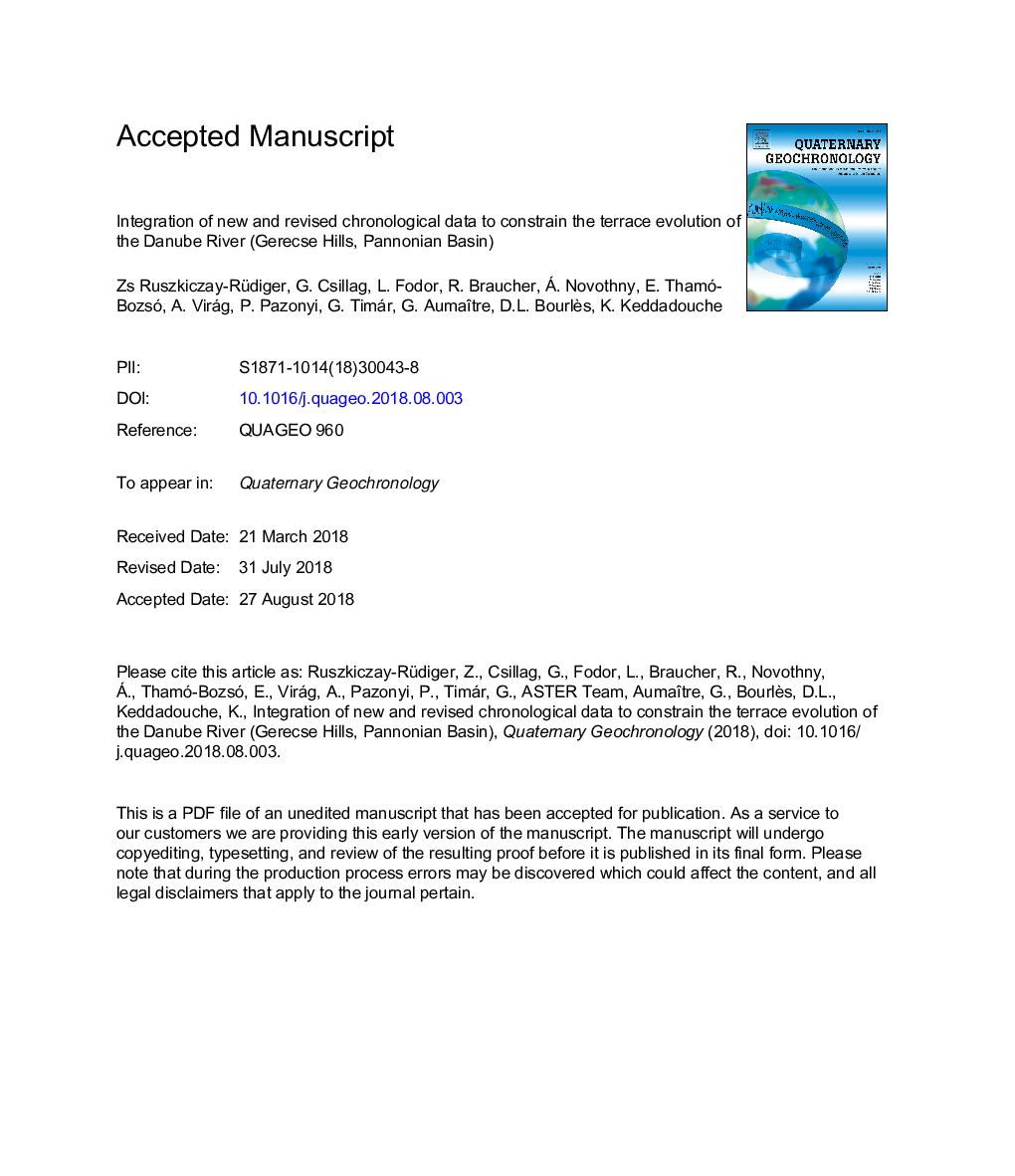| Article ID | Journal | Published Year | Pages | File Type |
|---|---|---|---|---|
| 11033074 | Quaternary Geochronology | 2018 | 61 Pages |
Abstract
To establish a more robust chronology of the Danube valley in Hungary, new cosmogenic nuclide- (10Be depth profiles, 26Al/10Be burial durations and burial depth profile) and luminescence-based (pIRIR290) terrace ages were acquired and compared to revised paleontological and published U/Th and magnetostratigraphic data. All the applied geo-chronometers led to concordant terrace ages, with the exception of the U/Th method applied on travertine deposits covering terraces. U/Th ages predating the last interglacial manifest a bias towards younger ages, and so they were ignored in relation to the quantification of terrace ages. As a result, terrace ages from the Late Pliocene to Late Pleistocene were settled. With regard to data from the Middle Pleistocene onwards, the combination of diverse methodologies led to a tighter bracketing of terrace ages than would be possible using a single dating method. The modelling of cosmogenic 26Al and 10Be concentrations enabled to derive surface denudation rates and their combination with paleontological data also allowed us to decide between diverse landscape evolution scenarios.
Related Topics
Physical Sciences and Engineering
Earth and Planetary Sciences
Geochemistry and Petrology
Authors
Zs Ruszkiczay-Rüdiger, G. Csillag, L. Fodor, R. Braucher, Á. Novothny, E. Thamó-Bozsó, A. Virág, P. Pazonyi, G. Timár, ASTER Team ASTER Team,
